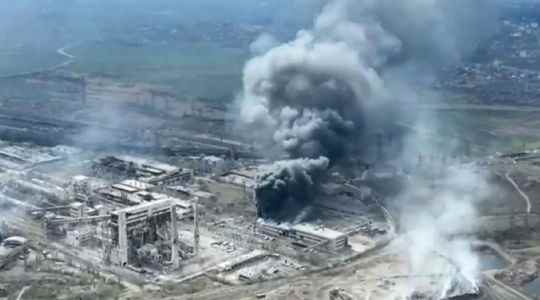“A city literally burned down, without a single undamaged building.” It is with these words that the Ukrainian President Volodymyr Zelensky described, to the Portuguese parliament, the face of the city of Mariupol, under Russian fire since the beginning of the invasion, on February 24th. However, it has not yet fallen because there remains, in this port city in the south of the country, a final pocket of resistance. About 2,000 Ukrainian soldiers, but also several hundred women and children, are entrenched in the huge steel complex of Azovstal, a city of steel and concrete that has become a survival bunker.
Owned by the Meltinvest group, headed by the richest man in Ukraine, Rinat Akhmetov, this metallurgical plant which came into operation in 1933 produced, before the war, 5.7 million tonnes of iron and 6.2 million tonnes of steel per year. The company invested heavily in the city, which owed its economic dynamism to it, in the absence of the good health of its inhabitants, more affected by cancer than in the rest of the country due to the massive release of toxic fumes into the air.
Twenty kilometers of underground tunnels dug thirty meters deep
Spread over 11 km², Azovstal is the most important factory in Ukraine. And if it was chosen to serve as an entrenched camp, it is because its constructions are largely underground, with in particular 20 kilometers of corridors dug 30 meters deep.
An island of resistance impossible to bombard, by the very admission of the representative of the pro-Russian separatist forces, Edouard Bassourine, who resolves, according to his expression, to have to “clean up underground”. Some infrastructures have even been designed with the aim of resisting a nuclear strike.
An urban guerrilla thus seems to be preparing, but the Russians are wary of it, because the entry in the tunnels would prove to be perilous for them. “Russian forces may try to enter, but they will be massacred because the defenders of the tunnels have the absolute tactical advantage,” an analyst from the Jerusalem Institute for Security and Strategy told AFP. Waiting is therefore privileged and Vladimir Putin has asked his army to besiege the site and not to lead an assault there, so as not to endanger the lives of his soldiers and officers. This Friday, the Russian Ministry of Defense also said it was ready to observe a truce “on all or part” of the Azovstal factory, in order to allow the evacuation of civilians and the surrender of combatants.
A symbol of hope for Ukrainians
If the Kremlin welcomed the capture of Mariupol, Ukrainians and Americans hastened to deny the fall of the city. Far from declaring himself defeated despite the almost total destruction of the city, Volodymyr Zelensky assured that the battle was still ongoing. “They can only delay the inevitable, the moment when they will have to leave our territory, in particular Mariupol, a city which continues to resist Russia, despite everything the occupiers say,” he said, playing as well as the semantic opposition to the Russian discourse, which wants the inevitable to be the surrender or the death of the entrenched Ukrainian soldiers.
Same verbal strategy on the side of the United States. Joe Biden considers the control of the city of Mariupol by Russian forces “questionable”. “There is still no proof that Mariupol is completely lost,” insisted the American president, adding that Vladimir Putin “will never succeed in controlling and occupying all of Ukraine”. Because in Mariupol, as in the whole country, it is indeed an iron will that seems, since the beginning of hostilities, to best characterize the state of mind of the Ukrainian fighters.
